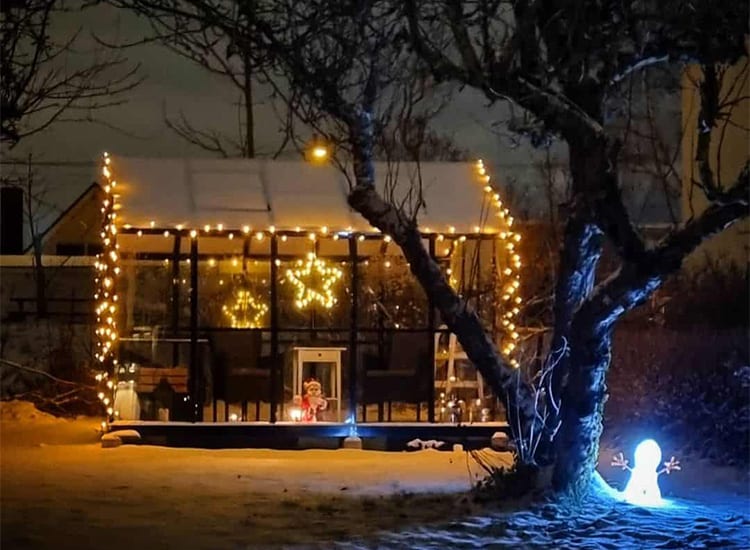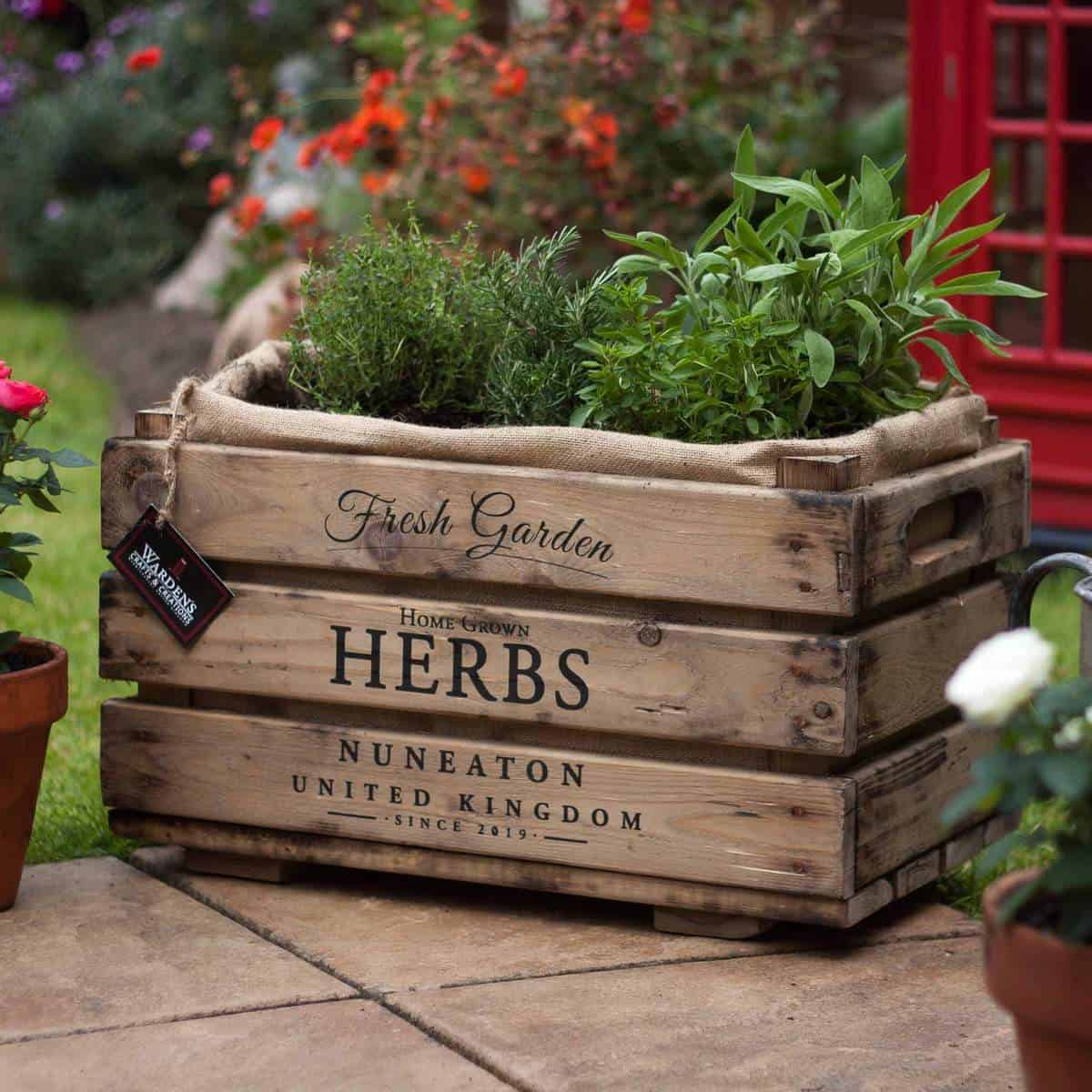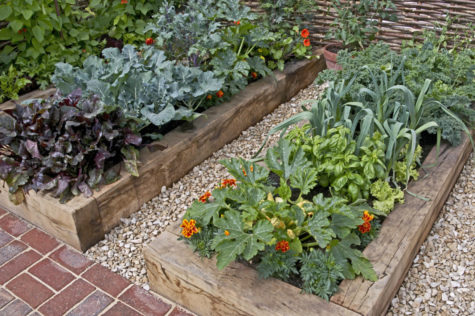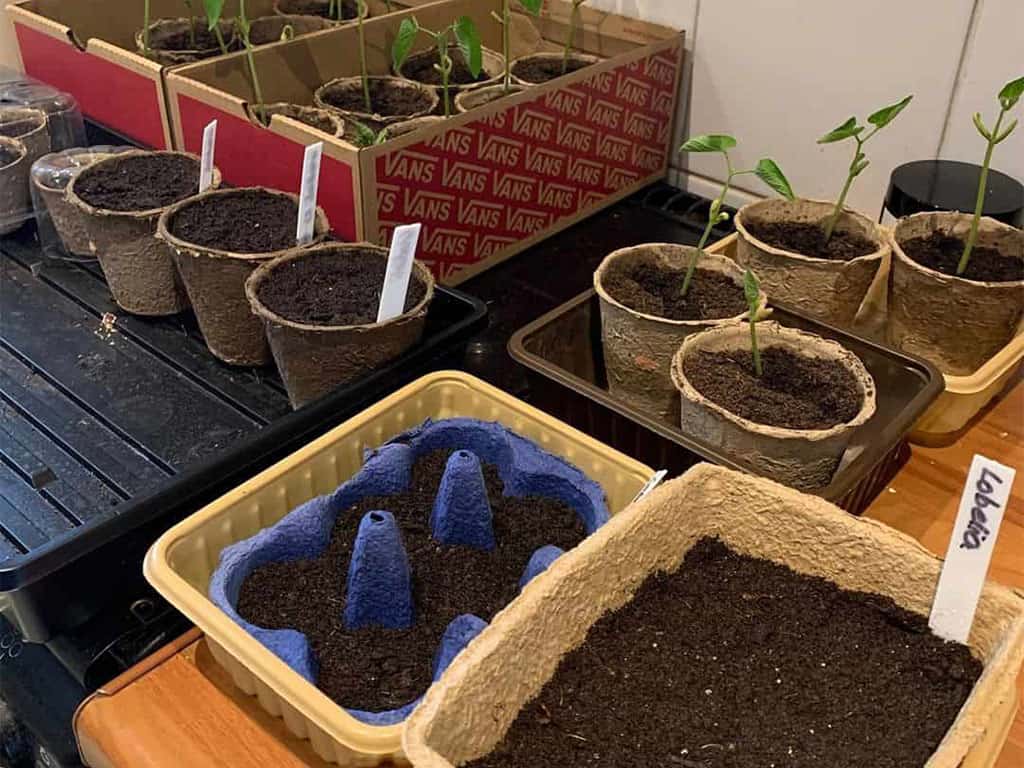I recently wrote some tips for landscaping when your garden doesn’t get much sun. I’ve also been on a mission to give you some guides to growing vegetables… and it got me thinking – can you grow vegetables without full sunshine all day? Well, it turns out that, yes, you can – so here’s a quick list of vegetables to grow in shade.
These tips are ideal for anyone who only has a limited amount of direct sunlight in their garden whether that’s because you have a north-facing outdoor area, or are surrounded by tall buildings or fences. Of course, this guide will also work for anyone that’s just keen to make the most out of every square foot.

How much shade are we talking?
All plants need some amount of light to live, so when I’m talking about vegetables to grow in shade, I mean partial shade – plants that don’t need full sun. What does this mean? Here’s a quick explanation of how sun exposure is categorised in an outdoor garden:
- Full sun – applies to an area that gets at least 6 hours of bright, unobstructed sunlight between about 10am and 6pm.
- Partial shade – anywhere that only gets 3-6 hours of direct sunlight and is in the shade the rest of the time, or that gets dappled/filtered light all day (for example, through sparse leaves or a screen).
- Full shade – an area that doesn’t get any direct sunlight throughout the day. To be clear, nearly all fruits and vegetables need at least partial sun to grow, so your choice will still be limited if your garden doesn’t get any direct light whatsoever. Take a look at our shade-loving plant ideas for more choices.
What are the vegetables that don’t need full sun?
A general rule of thumb is that, if a plant has flowers that then turn into fruits (tomatoes, chilli pepper, cucumber), then it needs lots of sunlight. On the other hand, root vegetables will tolerate a combination of sun and shade, and leafy veg will actually keep better in the shade and can become stressed with too much heat.
Here are 21 different vegetables to grow in shade:
- Asparagus likes full sun but will tolerate partial shade. This crop can be tricky to grow, but looks great in a vegetable patch or as elegant foodscaping.
- Bok choy, also called pak choi, likes a cooler season, so growing it in partial shade will slow down bolting or going to seed.
- Broccoli is the perfect candidate for a shady area in warmer seasons, as the cooler microclimate will slow down its bloom (which turns it bitter).
- Brussel sprouts grow late into the year – autumn frost can actually make them taste better. Planting them in partial shade will help them weather hot summers.
- Cabbage heads grow really well in partial shade, with just enough sunlight to keep them healthy, but not enough for the dense leaves to get too hot during the day.
- Carrots are another crop that loves sunshine, but will fare perfectly well in partial shade (although they might be a little smaller come harvest time). Check out our guide to growing carrots for more tips.
- Cauliflower grows slower in partial shade, but it’s worth the wait. Full sun can cause cauliflower to flower prematurely, and can discolour the heads.
- Garlic is grown by planting a clove in mid-late autumn, left over winter and then harvested the following summer Bulbs grown in partial shade will be slightly smaller than those grown in full sun, but there’s no effect on their flavour.
- Kale leaves can become especially tough and bitter in full sun, so it’s a crop that definitely does better in the cooler climate of partial shade.
- Kohlrabi grows above ground, and can struggle in very hot weather. Partial shade provides better growing temperatures, although the heads will be slightly smaller on average.
- Leeks take a long time to mature, and generally taste better after the first autumn frost. It’s another crop that can grow happily in full sun or partial shade, so leeks are great for a garden that gets a combination of light.
- Lettuce grows best in cooler temperatures, and is ideal for growing in the shade of trees, or companion planting with taller crops.
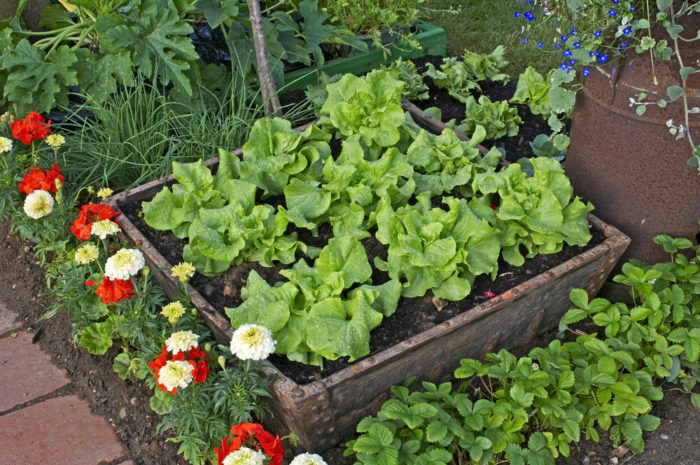
- Parsnips grow better in the cooler temperatures offered by partial shade. They’re also another crop that generally tastes better if you wait to harvest them until after the first autumn frost.
- Peas – both snap peas and garden peas – appreciate partial shade and cooler temperatures. Don’t forget to provide a trellis or wigwam for them to climb up.
- Potatoes thrive in sunny weather, but if you’re happy with a smaller harvest, they can be grown in partial shade too. Take a look at our tips for growing potatoes.
- Radish grows best in cooler seasons, so planting it in partial shade will help it thrive over summer. They grow quickly, making them great for staggered planting and teaching children about the outdoors.

- Rhubarb is a perennial that needs at least 365 days to mature. The good news is that it doesn’t need much maintenance and it will grow quite happily in partial shade, leaving you with more room in sunny spots.
- Spinach is a low-maintenance crop that provides beautiful foliage – although it’s prone to bolting in warm weather. Growing it in partial shade will give you more time to harvest and enjoy this nutritious plant.
- Swede grows just a little bit smaller in the shade, and is a great way to add some variety to your root vegetable harvest.

- Swiss chard is a great alternative to spinach, and will tolerate slightly warmer temperatures. Even so, it’s a great choice if you’re looking for a variety of vegetables to grow in shade.
- Turnips will have an extended season if you plant them out of direct light – as the weather gets warmer, the roots lose their texture and flavour.
Tips for growing vegetables that don’t need full sun

There are challenges to growing vegetables in partial shade and mixed light, but there are benefits too. Here are a few things to remember when you’re tending your garden:
- Good quality soil and lots of garden compost will compensate for some of the nutrients your plants aren’t getting from the sun. Make sure your soil is in good condition for the most successful harvests in a shady garden. Learn how to improve your soil condition.
- Water won’t evaporate as quickly when it’s in the shade, so your crops will be slightly lower-maintenance once you’ve found the right schedule.
- Having said that, trees will deflect rainfall (and drink a lot of water themselves), so you’ll still want to check your crops after wet weather. Mulch can help to retain soil moisture.
- Pots or containers can be a good solution for growing veggies beneath trees (and competing for resources), and will allow you to move them to be in sunlight for more of the day.
- Warm weather crops will take longer to mature in the shade, so be prepared to wait a bit longer, and expect crops/yields to be smaller than you would expect from growth in full sun.
- On the flip-side, cool weather crops will be happier in a shady climate. Spring crops will last longer, and you can start planting autumn crops sooner.
- Slugs and snails prefer cool, shady areas of the garden, so make sure you know how to deter them.
The lesson here is that, even if you don’t have the “perfect” garden, there’s still lots you can do. Take a look at our ideas for small gardens, and side-return style tips for more ways you can use awkward spaces.
What are your garden challenges – is there anything you’d like us to cover next?

Save this pin for later



